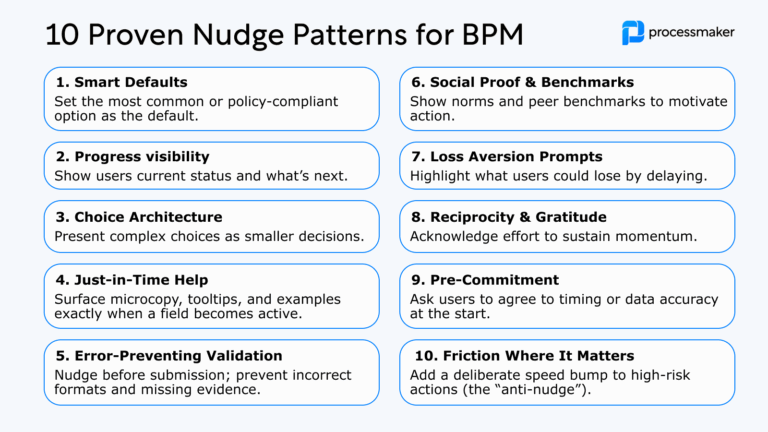Universities are becoming more enterprise-like by the day, requiring holistic solutions to meet student demands. Here’s how to combat organizational constraints in today’s market with a BPM for colleges.
College used to be a place where the main goal was to receive a degree to get a job. Based on the job market’s increasing demands, it’s not so cut and dry anymore. The educational system is a two-way street, where students desire an easier journey and the college needs to supply the resources to enable the success of that student journey. Universities are evolving to have a more proactive role in furthering the business agenda of companies leading the way in technology, and less on the student’s best interest. At the end of the day, universities are businesses. What once was the pinnacle of education is now a for-profit enterprise.
Thanks to the Internet, colleges not only compete with businesses and an evolving market but also with the accessibility of free information. Anyone can learn online with the right resources, making textbooks that require massive amounts of funding and collaboration expired in up-to-date information before going to print.
So how do you combat years of tradition on the university level with increasing competition in the educational sphere? You prioritize the customer, which in this case, is the student. The reality is that colleges rely significantly on endowment and tuition paid by their students, and those students demand a certain level of agility, flexibility, and resources made available based on the evolving world around them.
Despite most higher educational institutions having access to mobile applications, the student journey still suffers. This is because many of these features are not unified in one system, often operating within organizational silos in each department or campuses in the school. What is designed to make information more accessible for students winds up a broken system?
Much like a business, colleges today need alignment more than ever to remain competitive. On the enterprise level, companies turn to software to heighten the productivity of their staff, the experience of their customers, and capabilities of their current offers. For universities, using the business process management (BPM) method and associated software can yield similar results for students.
What exactly is BPM?
Nathaniel Palmer—a pioneer and thought leader in the discipline—advocates BPM as a practice, not a product or a service. BPM combines easier design, optimizing, control, execution, and measurement of workflows, allowing organizations to execute swiftly and on larger scales.
Currently, BPM is merging with automation to provide more intuitive solutions based on user activity. One of these areas is higher education, as students, today are much more “plugged in” than ever before.
With the introduction of technology, students can experience learning in ways that were not accessible before. Below, we outline five ways BPM can enhance the college experience.
No. 1: Your departments become more organized, and thus easier to address.
In large educational settings like public universities or research facilities, departmental organization can be robust. Organizational heads across multiple campuses face significant challenges to communication, especially when the university has smaller colleges within its ecosystem.
When the business school, humanities school, and mathematics school all operate on different processes, the student involved in the university can experience significant discourse. It’s hard enough to learn the protocol of the university, let alone the individual ways of going about things at each individual college within.
How do you solve multiple processes of differing departments under one roof? The answer is business process management (BPM). Thanks to technology advancements, BPM is much more than just a discipline these days. The software component enables colleges to integrate a system that is automated and visually easy-to-read for all parties involved. Staff in different departments can come together for easier collaboration under one system, making the cross-campus communication aligned and focused on the college’s goals.
Every professor and department head is able to operate from one centralized system that takes previous systems into account. Seamless integration into current systems can increase the organization and accountability through the college. Communication lags no longer become a factor, and your students feel they are supported, and heard, in the process.

No. 2: The college student’s experience goes from frustrating and broken to streamlined and seamless.
It’s easy to forget everything a college student has to undergo during their time in school. From admissions, all the way to graduation, simple things like creating an ideal class schedule, turning in assignments, signing up for extracurricular activities, and securing financial aid can all pose issues for the student.
More often than not, these different processes operate on the way things have always been done at the college. Colleges tend to be set in their ways, relying on the traditions of the school rather than the increasing demands of the students.
The result? Students expect a wider variety of services tailored to their educational experience, and the colleges are struggling to keep up. It’s a broken system that many report is both frustrating and preventable.
But not every school is equipped to handle the expenses associated with providing greater access to technological resources. While student populations are on the decline, the accessibility of wireless power is on the rise. With the increasing demand of STEM degrees, universities need to adapt to powering these departments with the technology at scales never seen before. This way, colleges are able to deliver a proper STEM education with the latest technology.
Another factor to consider in addressing student demands is online education. One in six students today is exclusively online, as reported by the National Center for Education Statistics. Creating holistic solutions across the educational system in regard to online education is critical for supporting the student experience. Some of this includes providing more options for hybrid learning, like flipped classrooms or mixed in-person classes with digital learning. Maintaining a balance between fully online constraints and the desire for greater accessibility to education is difficult when university staff isn’t on the same page due to operational inefficiencies.
When every touchpoint of the student journey is carefully considered and crafted, the experience becomes seamless. Uploading and turning in documents becomes instantaneous, and applying for grad school is straightforward and quicker due to digital applications. Eliminating paper processes, prioritizing technology for online learning, and leveling up for digital solutions on the organizational level allows everyone involved to be updated in real-time, creating compliant, efficient working relationships across the entire university. Transitioning to a digital system can reduce the likelihood that one party is annoyed at a lack of communication, along with failing to meet deadlines for audits or other compliance matters.
No. 3: Your alumni will be more inclined to participate due to increased accessibility.
As business shows, the best kind of customer is a loyal customer. In the case of the college, students that have a great experience are more likely to be enthusiastic about participating post-college than if they had a poor experience. One way to guarantee alumni participation is by making the participation process as easy as possible. This involves serious streamlining of services and as little friction in communication as possible, a feat that hasn’t been mastered by most universities.
A combination of customer relationship management (CRM), BPM, and marketing automation software can enable alumni to access information needed to remain involved with campus-wide initiatives. Donating money, volunteering, attending events, and other activities becomes easy-to-access over one system powered by software.
No. 4: Your university can manage time better, focusing more on teaching and less on administrative tasks with a BPM for Colleges.
Some of the greatest challenges schools face is the busywork aspect of answering student and colleague requests. Professors end up spending more time on keeping the engine of the college-going, rather than incorporating new ways to improve learning in their classrooms.
By integrating BPM, the entire college ecosystem can operate on one unified platform. Data is gathered and analyzed in one location, enabling key stakeholders to communicate faster, make better decisions, and free up the hands of the professors to focus more on teaching, rather than busywork like answering messages and calls.
Adopting a digitally-facing mentality allows for colleges to advance institutional goals, keeping up with timely delivery of assets and requests. It’s not just about organizational efficiency, but BPM software becomes a powerful tool in leveraging the productivity between stakeholders in the college system.
The College Experience in a Nutshell
Colleges today experience significant challenges to retain their students. From privatization due to reduced state funding to lower completion rates, universities need to adopt new technology and organizational models to remain competitive in today’s market.
Since colleges operate more like businesses now than ever, integrating a trusted source of organization and ROI-yielding systems like BPM software can produce transformative results on the collegiate level. By streamlining systems into one unified digital platform, the staff is able to collaborate more effectively in cross-campus initiatives, respond to student requests promptly, drive high levels of engagement with alumni, and manage time more efficiently to increase overall productivity. The result is an enhanced college experience, directly affecting the appeal of the school in regard to which universities students see as desirable in pursuit of post-secondary education.
About ProcessMaker:
ProcessMaker is an American international SaaS corporation headquartered in Raleigh-Durham, North Carolina. We provide total customer support, training, and professional services to larger enterprises requiring highly-customized workflow solutions with our Business Process Management (BPM) software. Our flagship Low-Code product is the preferred choice for our customers due to its deep customization ability with little programming knowledge needed, making Low-Code an easy-to-use solution among non-technical teams.





